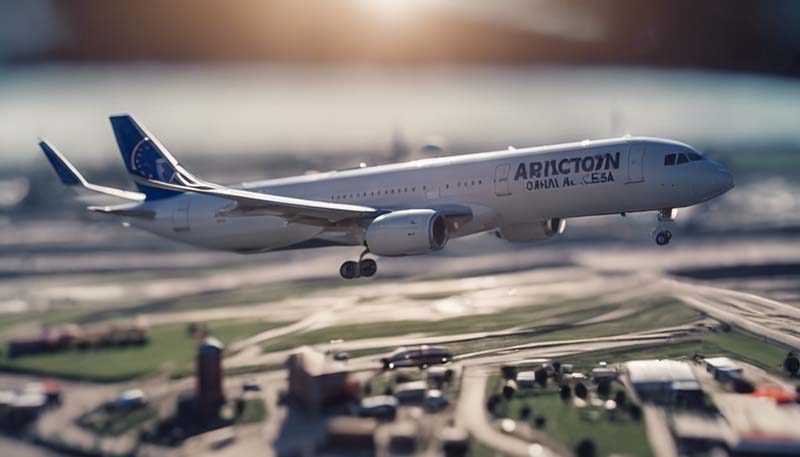The Impact of the European Union Aviation Safety Agency (EASA) on Air Travel
The European Union Aviation Safety Agency (EASA) is an intergovernmental organization that plays a crucial role in ensuring the safety of civil aviation within the European Union and its neighboring countries. Established in 2002, EASA has since been working tirelessly to regulate and oversee the aviation industry, with the primary goal of improving air travel safety and protecting passengers. This article aims to explore the various ways in which EASA has impacted air travel, focusing on its regulatory framework, safety initiatives, and the role it plays in fostering international cooperation.
Regulatory Framework
EASA's regulatory framework is based on a set of comprehensive rules and regulations designed to ensure the highest levels of safety in all aspects of civil aviation. These regulations cover a wide range of topics, including aircraft design, manufacturing, operation, and maintenance. By establishing and enforcing these standards, EASA has played a significant role in shaping the aviation industry and raising the bar for safety across the board.
Aircraft Design and Manufacturing
One of the key areas in which EASA has made a substantial impact is aircraft design and manufacturing. The agency sets strict standards for the design, production, and certification of new aircraft models, ensuring that they meet the highest safety requirements. This includes evaluating the structural integrity, systems, and components of aircraft, as well as assessing their performance under various conditions. By doing so, EASA has contributed to the development of safer and more reliable aircraft, which in turn has improved the overall safety of air travel.
Advertisement
Operation and Maintenance
EASA also plays a vital role in regulating the operation and maintenance of aircraft. The agency issues certifications to airlines and operators, ensuring that they adhere to strict safety guidelines and maintain their fleets in accordance with established standards. Additionally, EASA sets guidelines for pilot training, licensing, and medical requirements, further contributing to the safety of air travel. By enforcing these regulations, EASA has helped to create a more robust and reliable aviation industry, reducing the risk of accidents and incidents.
Safety Initiatives
In addition to its regulatory framework, EASA is actively involved in various safety initiatives aimed at improving the overall safety of air travel. These initiatives include conducting research and development projects, promoting safety management systems, and providing training and support to the aviation industry.
Research and Development
EASA invests significant resources in research and development projects aimed at identifying and addressing emerging safety issues. By working closely with industry stakeholders, researchers, and other regulatory bodies, EASA is able to stay at the forefront of aviation safety, identifying potential risks, and developing innovative solutions to mitigate them. This proactive approach has led to numerous advancements in aviation safety, including the introduction of new technologies and the improvement of existing systems.
Safety Management Systems
EASA strongly promotes the implementation of safety management systems (SMS) within the aviation industry. SMS is a systematic approach to managing safety risks, which involves the continuous identification, assessment, and mitigation of hazards. By encouraging airlines and operators to adopt SMS, EASA has helped to create a more safety-conscious culture within the industry, leading to a reduction in accidents and incidents.
Training and Support
EASA also plays a crucial role in providing training and support to the aviation industry. The agency offers a range of training courses, workshops, and seminars aimed at enhancing the knowledge and skills of aviation professionals. Additionally, EASA provides guidance and support to airlines and operators in the implementation of safety measures, helping them to comply with regulatory requirements and maintain high safety standards.
Fostering International Cooperation
As a leading aviation safety regulator, EASA plays a significant role in fostering international cooperation and collaboration. The agency works closely with other regulatory bodies, such as the International Civil Aviation Organization (ICAO) and the Federal Aviation Administration (FAA), to share best practices, develop joint initiatives, and harmonize safety standards. This collaborative approach has led to a more unified and consistent approach to aviation safety, both within the European Union and globally.

Bilateral Agreements
EASA also engages in bilateral agreements with non-EU countries to ensure the mutual recognition of aviation safety standards. These agreements facilitate the exchange of information, expertise, and resources between regulatory bodies, helping to raise safety standards and promote the safe and efficient operation of air travel worldwide.
Global Influence
The influence of EASA extends beyond the European Union, as the agency's safety standards and initiatives are often adopted or adapted by other countries and regions. This global impact has led to a more uniform approach to aviation safety, which ultimately benefits passengers and the industry as a whole.
Conclusion
The European Union Aviation Safety Agency (EASA) has had a profound impact on air travel, both within the European Union and globally. Through its comprehensive regulatory framework, safety initiatives, and international cooperation, EASA has contributed to the continuous improvement of aviation safety and the protection of passengers. As the aviation industry continues to evolve and grow, the role of EASA remains crucial in ensuring that air travel remains safe, reliable, and accessible to all.